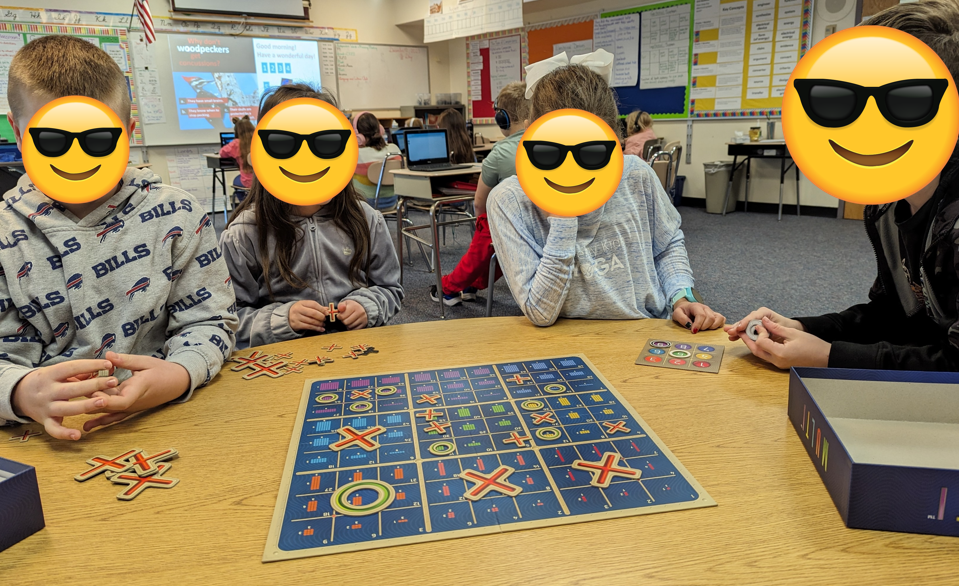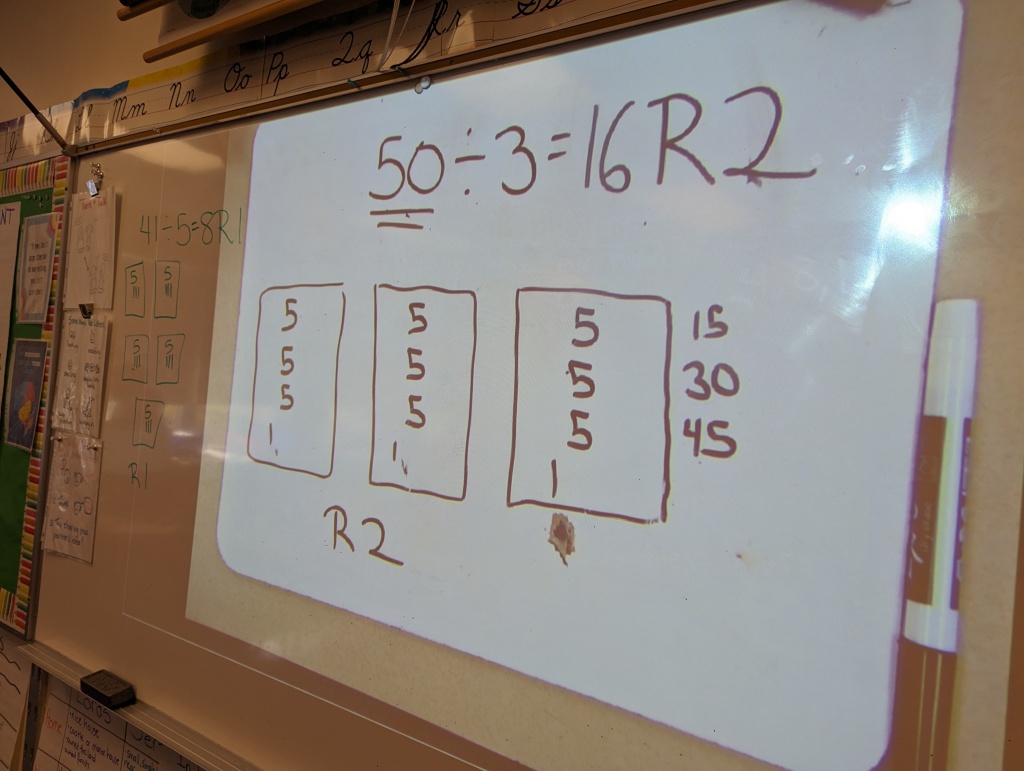This week I’ve got a few teaching wins to share as well as a story of how I had to completely change my math lesson on the spot.
First, the teaching wins:
1) I pulled a small group to play the game Multi. They loved it! Throughout the game they kept remarking, “This is so fun! Where can I get this?”
2) Early in the week we took notes on the lives of serfs during the Middle Ages. Later, students wrote an informative paragraph using their notes. Many of them were amazed they were able to write a full page (or more!). We talked about how good notes support us when we get to writing.
3) We’re working on representing and solving multi-step problems in math. I’ve been mixing numberless word problems, three reads, and worked examples to support their sense making. I’ve been impressed with how many have been able to create accurate models and equations on their own. This doesn’t signal long-term learning, but it’s a good starting point!
4) My principal stopped me in the hall to tell me the school did a survey of parents about communication between home and school. He said several parents made a point of telling him how much they appreciate the emails I send home and the tone of my communications. Yay!
And now for a short story about how I had to completely change my math lesson on the fly with my students:
It all started with this Same and Different warm up. Things were going great. They shared lots of ideas, with me adding in vocabulary as needed, until I asked the students, “What about the quotients? What’s the same or different about those?”
Students chatted in pairs. When I called them back together they said, “A and C are the same because you can do those. B and D are different because you can’t solve those.”
I was a little perplexed. I asked, “Why?”
A student shared, “Because you can’t skip count by 4s to get 15.”
I replied, “15 divided by 4 does have a quotient. Was anyone able to figure it out?”
A student raised her hand. “It’s 3 remainder 3.”
I turned to the room, “Did you hear that word she said, remainder? That’s a word you probably heard in 3rd grade. Talk to your partner and try to remind each other what it means.”
Students chatted in partners, and it was immediately obvious they had no memories to remind each other of. The one student who had shared “3 remainder 3” said she just learned about remainders in an iReady lesson this week. No one else in my class had ever heard of them before!
I was floored! While students learn to interpret remainders in 4th grade, they should at least encounter division with remainders as they’re developing their understanding of the operation in 3rd grade. Division so often results in a remainder, students should be encountering it early on in their learning.
I suddenly realized I could not, in good conscience, continue with my iReady Mathematics Lesson that was all about solving multi-step problems where students would have to divide and interpret the remainder.
Mentally I said, “Shit!”
Out loud I said, “Okay, let’s talk about division with remainders.”
Since the only strategy my students seem to associate with division is skip counting, I went ahead and modeled dealing out cubes under the document camera.
“I’ve got 15 cubes. It says divide by 4. What action am I doing when I divide?”
Silence. Finally, a student shared, “Making groups?”
“Ok, so a group of 3, a group of 2, a group of 3…”
Something finally clicked. “No, they have to be equal.”
For the rest of the lesson, we got out color tiles and students solved division problems on their mini white boards. I walked around and monitored students. If a student had a correct answer, I would pose a new problem for them to solve. If they were having trouble, I offered suggestions.
The interesting thing to me was the sheer amount of direct modeling going on. I don’t think any one of my students used any relationships or anything to divide more efficiently. I was throwing out 50 divided by 3, and they were dutifully dealing out 50 tally marks. Wild!
I tried sharing how you can use larger numbers like 5 and 10 so you don’t have to count by ones all the time, but they were already so overwhelmed with the idea of division have remainders that I didn’t push it.
When we came back together at the end, we did touch on the idea of interpreting remainders.

They recognized that you could cut the remainder in half if it’s candy or money, but not if the remainder is a person.
I’ve decided that when we go back to solving multi-step word problems, I’m going to skip the interpreting remainder problems for now. Honestly, I would have introduced that idea with single-step problems to begin with. This lesson was biting off waaaaay more than my students could chew.




